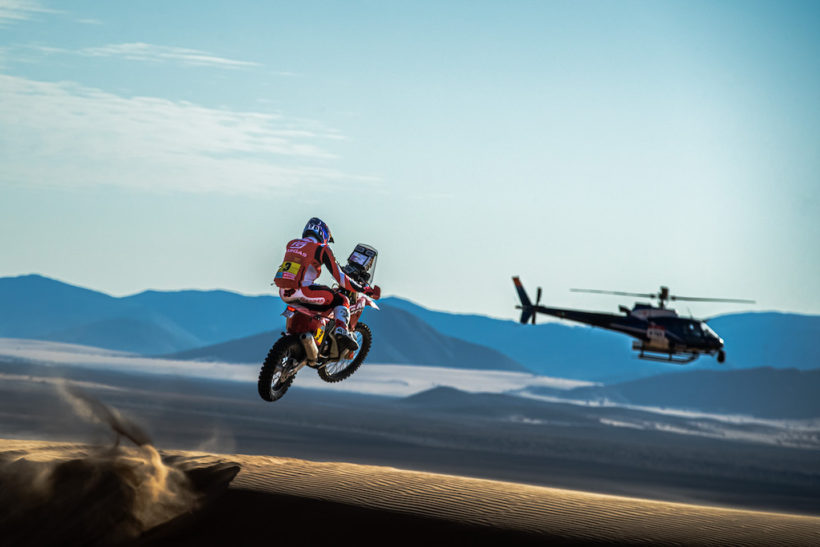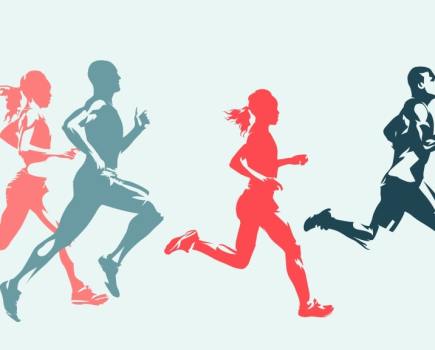There are races, and then there are races. The Dakar Rally has long enjoyed the moniker of ‘The Toughest Motor Race in the World’. When you consider the levels of endurance, focus and sheer bravery that are needed to cross 8,000km of the world’s most forbidding terrain, it’s easy to see why.
No matter which class competitors race in – from motorbikes through to trucks – the competition, formerly known as the Paris-Dakar Rally, is a daunting prospect.
Dakar Rally 2022
This year’s race was run across 12 days through Saudi Arabia. This pushed drivers to their very limits, as they gunned through canyons and cliffs, traversing sand dunes and rocks to successfully clear sprawling stages numbering many hundreds of kilometres.
Beyond the punishing physicality of handling a vehicle through highly challenging terrain, racers also have to navigate through the remote wilderness, hitting a series of waypoints to successfully clear the stage. Miss just one, and the ensuing 20-minute time penalty can easily mean the difference between success and heartbreak.
Nobody knows that better than the motorbike champion of this year’s Dakar Rally, Sam Sunderland. So fierce is the competition in the Bikes class in which Sunderland competes, after 12 days racing, across thousands of kilometres, Sunderland clinched the trophy with a lead of just three minutes.
The razor-thin margin for errors of judgement means that, compared to other rallying events, The Dakar demands unmatched levels of both physical and mental performance.
“You imagine the World Rally Championships,” explains Sunderland, “they have a navigator alongside them. We have to do that ourselves, while racing. It’s like playing chess while racing a motorbike, it’s so intense for your head.”
View this post on Instagram
‘The Dakar demands unmatched levels of both physical and mental performance.’
While none of the other classes, including Quads, Cars, Trucks, Classics, (not to mention purpose-built prototype vehicles), could boast such a narrow margin of victory, Dakar is replete with high-octane drama across the board, with one of this year’s most attention-grabbing subplots being the debut of Audi’s purpose-built electric RD Q e-tron, not to mention the Truck class seeing its first hydrogen-based entry, Gaussin’s H2 Racing Truck.
As well as embracing emerging technologies, other competitors relish running the Dakar gauntlet in retro adventure machines. This year’s Classics class sported a host of safari-spec Porsche 911s, some seriously-modded Citroen CXs, and even a humble Lada Niva.
Endurance is pivotal to success in The Dakar Rally. That’s never more true than when staging the race atop a bike, the most physically demanding class that Dakar offers.
“People say ‘you’ve got an engine, doesn’t the bike do all of the work?’” says Sunderland. “But it’s so physically demanding, you’re constantly fighting the forces of the bike. I lost 7 kilos in Dakar in 2017, when I first won, in a 12-day race.”
Summoning such levels of will-sapping exertion, day after day, only becomes more impressive when you consider both the distance and the climates that the racers are battling against.
“The longest day I did in 2015 was 1,250km,” recalls Sunderland. “That would be like going from Dorset, in the South East of England, to Scotland. But you’re going through so many different terrains, and even climates… I remember in South America, you started a day in Bolivia at -5°C, 5,000m altitude. You’re then finishing at +45°C in the dunes in Argentina. It’s pretty extreme.”
Mental demands of the Dakar Rally
While grappling with the sheer physicality of the race, entrants also have to contend with the mental demands. From maintaining focus through gruelling days, to all the time navigating their way across barren and inhospitable terrain. While the original Paris-Dakar Rally ran from France, down through Spain and then across the African continent, the modern incarnation of the race left Africa for South America in 2009, before moving once more, this time to Saudi Arabia, in 2020.
Whichever countries the rally visits, the geography is similarly challenging. Especially given that, true to the competition’s free-spirited, trailblazer roots, anybody can enter. This means racing professionals compete alongside amateur privateers – as long as they can demonstrate some rallying experience.
Despite the race still possessing that free-wheeling sense of adventure that has seen competitors attempt to complete it in everything from Rolls Royces to fish and chip vans, the professional aspect of the rally is hotly contested. You’ll see teams bringing scores of support crew along to give their racers that vital edge.
“We have three or four physios for the team of riders,” explains Sunderland. “So, you can get a massage and some treatment after riding. I like to do a little bit of, not quite mediation, but I try to play one of those apps with my headphones on and just zone out for a bit. Your head is fried after the race.”
Dakar Rally race preparation
As well as post-stage treatment, race preparation is key. Competitors need to ensure they have adequately prepared themselves to face the severe conditions. Like many of the other professional racers who compete in The Dakar, Sunderland is a World Rally Championship competitor. This means getting into the right physical shape for the competition has to fit around his other racing commitments.
“We’re pretty flat out with riding,” he says. “We don’t really have a solid off-season, maybe a month or so after Dakar. I do a lot of outdoors-based cardio stuff, like hiking, cycling, running, cross-country skiing.
“Then of course, I do a bit in the gym, which is mostly coordinated strength work, not busting out bench presses or squat racks. If you’re big and muscular, it would just burn more fuel and you’re not quite as agile and flexible. I tend to be around 76-77kg all year round.”
View this post on Instagram
Refuelling during the Dakar Rally
Of course, taking care of the body during the rally extends beyond physical conditioning. Nutrition forms a vital safeguard against injury: by ensuring that racers are always alert, despite the obvious fatigue that accompanies such protracted stages.
However, competing in the remote wilderness of the desert means that refuelling the body can be a tricky prospect.
“During Dakar, you’re in a camp in the middle of the desert. So, everything we eat are things we take with us,” explains Sunderland. “It’s a struggle to get fresh fruit and vegetables in. Whenever I can, I get fresh food, but you’re often eating bars and cereals.
“On race days, I’ll have porridge in the morning with some peanut butter, some fruit if we’ve got any and some honey along with coffee or Red Bull, before I head off. I’ll have an energy gel right before the stage begins. Then, at the refuelling, I carry gels and nuts with me.”
‘Competing in the remote wilderness of the desert means that refuelling the body can be a tricky prospect.’
Ultimately, for Dakar competitors like Sunderland, it’s that economy of existence, the harshness of the conditions, even the spectre of death that races alongside them, that spurs them on to prove they can prevail. Over 30 competitors have died contesting the Rally. On average that’s one racer per year.
Nevertheless, despite breaking many bones, including his back, not to mention losing a friend to the rally, Sunderland is adamant that for Dakar racers, it is the daunting nature of that challenge that makes it impossible to ignore.
“It’s who I am,” he says. “Where do you draw the line in protecting yourself? It’s what I live for so I try to put it out of my head, do a good job, stay as safe as I can and enjoy myself.”
View this post on Instagram
Words: Dan Cooper








